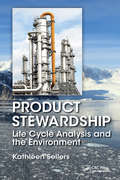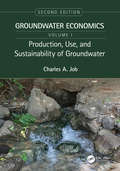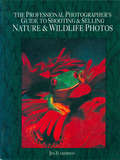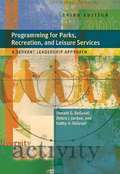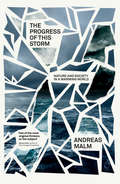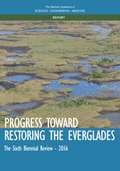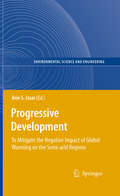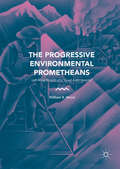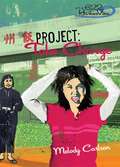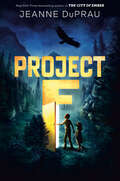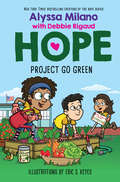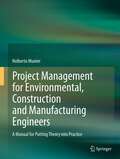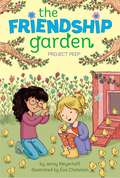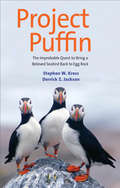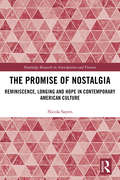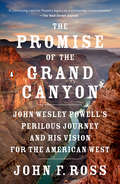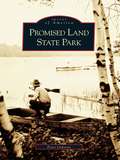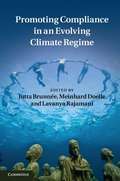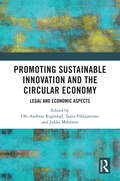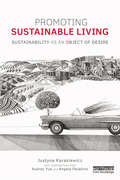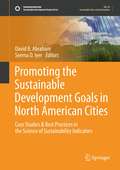- Table View
- List View
Product Stewardship: Life Cycle Analysis and the Environment
by Kathleen SellersConsider the Consequences of Bringing a Chemical to MarketProduct Stewardship: Life Cycle Analysis and the Environment explores the regulatory and scientific aspects of the life-cycle consequences of bringing a chemical to market. Using case studies to bring critical points to life, this multidisciplinary text explores the factors that influence ou
Production, Use, and Sustainability of Groundwater: Groundwater Economics, Volume 1
by Charles A. JobGroundwater is becoming increasingly scarce while the demand for water continues to grow at a global scale. Understanding groundwater resources and their sustainable management is imperative for the future of groundwater use, conservation and protection. This revised and updated two-volume set, focused on sustainability, covers the economic values of groundwater production and use, including micro- and macroeconomic factors, groundwater markets, economic evaluation tools, climate change, transboundary issues and policy evaluation. It explores numerous applications and describes ways to evaluate the economics of groundwater use in the context of the larger ecosystem and the natural capital it provides. FEATURES OF THIS VOLUME Includes an important new chapter on groundwater sustainability management Addresses new examples of groundwater use that are applicable at both the local and international levels Provides the foundation for policy, program and project analysis for all major uses of groundwater Updates groundwater use data along with explanations of major production costs and use benefits Gives a new perspective on users’ competition for the subsurface environment Production, Use, and Sustainability of Groundwater, Second Edition, the first volume of the two-volume set Groundwater Economics, is a must-have for any professional or student who needs to understand, evaluate and manage water resources from a range of production and use perspectives affecting groundwater resource sustainability.
The Professional Photographer's Guide to Shooting & Selling Nature & Wildlife Photos
by Jim ZuckermanWildlife and nature can be close to you as your backyard or the nearest zoo. In The Professional Photographer's Guide to Shooting & Selling Nature & Wildlife Photos, a professional photographer shows how to take fabulous wildlife and nature photographs and how to reach the best markets. More than 250 full-color photos include captions with detailed explanations of where and how each was shot and the easiest way to achieve the same effect.
Professor Goose Debunks Goldilocks and the Three Bears (Professor Goose Debunks Fairy Tales #1)
by Paulette BourgeoisThe first in a new series by the author of Franklin the Turtle! Join Professor Goose in this STEM-filled picture book as she fact-checks classic fairy tales and shares the science behind these flawed stories.Mother Goose's fairy tales are NOT based in science, and her great niece Professor Goose thinks it's time to share the truth. Join Professor Goose as she — literally — travels through the pages of Goldilocks and the Three Bears, fact-checking, exposing the flaws and explaining the science. Bears don't live in cottages — they prefer dens! The smallest bowl of porridge wouldn't be "just right" — it would have been the coldest! Professor Goose is delighted to see Baby Bear use the scientific method and Goldilocks's fight or flight response. And maybe Goldilocks should have used a GPS so she wouldn't have gotten lost in the first place?Jammed with jokes and wonderfully silly illustrations, this book entertains while it introduces basic scientific laws and rules to young readers. At the back of the book, readers will find Professor Goose's instructions on how to engineer their own chair for a (teddy) bear!
Professor Goose Debunks The Three Little Pigs (Professor Goose Debunks Fairy Tales #2)
by Paulette BourgeoisThe second in a fractured fairy tale series by the author of Franklin the Turtle! Join Professor Goose in this STEM-filled picture book as she fact-checks classic fairy tales and shares the science behind these flawed stories.Mother Goose's fairy tales are NOT based in science, and her great niece Professor Goose thinks it's time to share the truth. Join Professor Goose as she — literally — travels through the pages of The Three Little Pigs, fact-checking, exposing the flaws and explaining the science. Did you know that pigs run in a zigzag pattern? And that there's no way a wolf's breath would be strong enough to blow down anything, even if he has his whole pack with him? And that hay bales are strong enough to resist most up, down and sideways forces? Sounds like the perfect material for building a house! . . . Or, not. But not to worry — Professor Goose is armed with helpful hints on how to make a structure strong enough to withstand hurricane forces! Jammed with jokes and hilarious illustrations, this book entertains while it introduces basic scientific laws and rules to young readers. At the back of the book, readers will find Professor Goose's new, carefully researched fairy tale ending as well as her favorite facts about coding!
Programming for Parks, Recreation, and Leisure Services: A Servant Leadership Approach (3rd Edition)
by Donald G. Degraaf Debra J. Jordan Kathy H. DegraafThis book is about the art and science of the complete programming process. The authors strive to go beyond merely presenting the knowledge and skills needed to provide quality programs; they suggest the integration of values into this process. They do this from a servant leadership perspective.
The Progress of This Storm: Nature and Society in a Warming World
by Andreas MalmAn attack on the idea that nature and society are impossible to distinguish from each otherIn a world careening towards climate chaos, nature is dead. It can no longer be separated from society. Everything is a blur of hybrids, where humans possess no exceptional agency to set them apart from dead matter. But is it really so? In this blistering polemic and theoretical manifesto, Andreas Malm develops a counterargument: in a warming world, nature comes roaring back, and it is more important than ever to distinguish between the natural and the social. Only with a unique agency attributed to humans can resistance become conceivable.
Progress Toward Restoring the Everglades: The Sixth Biennial Review - 2016
by National Academies of Sciences Engineering MedicineThe Everglades ecosystem is vast, stretching more than 200 miles from Orlando to Florida Bay, and Everglades National Park is but a part located at the southern end. During the 19th and 20th centuries, the historical Everglades has been reduced to half of its original size, and what remains is not the pristine ecosystem many image it to be, but one that has been highly engineered and otherwise heavily influenced, and is intensely managed by humans. Rather than slowly flowing southward in a broad river of grass, water moves through a maze of canals, levees, pump stations, and hydraulic control structures, and a substantial fraction is diverted from the natural system to meet water supply and flood control needs. The water that remains is polluted by phosphorus and other contaminants originating from agriculture and other human activities. Many components of the natural system are highly degraded and continue to degrade. Progress Toward Restoring the Everglades is the sixth biennial review of progress made in meeting the goals of the Comprehensive Everglades Restoration Plan (CERP). This complex, multibillion-dollar project to protect and restore the remaining Everglades has a 30-40 year timeline. This report assesses progress made in the various separate project components and discusses specific scientific and engineering issues that may impact further progress. According to Progress Toward Restoring the Everglades, a dedicated source of funding could provide ongoing long-term system-wide monitoring and assessment that is critical to meeting restoration objectives. This report examines the implications of knowledge gained and changes in widely accepted scientific understanding regarding pre-drainage hydrology, climate change, and the feasibility of water storage since the CERP was developed.
Progressive Development
by Arie S. IssarThe book is based on the results of the investigations of the authors in the semi-arid and arid regions (ASAR) of the globe. These investigations brought to the conclusion that the warming climate will cause the drying up of the water resources in these regions. In this case the principles of Sustainable Development will not be able to avert forthcoming catastrophes. These conclusions brought to the compilation of the policy of "Progressive Development", emphasising investment in the development of new water resources and changing the natural environments while advancing the local populations on the dimension of knowledge by education.
The Progressive Environmental Prometheans
by William B. MeyerThis book is devoted to the exploration of environmental Prometheanism, the belief that human beings can and should master nature and remake it for the better. Meyer considers, among others, the question of why Prometheanism today is usually found on the political right while environmentalism is on the left. Chapters examine the works of leading Promethean thinkers of nineteenth and early and mid-twentieth century Britain, France, America, and Russia and how they tied their beliefs about the earth to a progressive, left-wing politics. Meyer reconstructs the logic of this "progressive Prometheanism" and the reasons it has vanished from the intellectual scene today. The Progressive Environmental Prometheans broadens the reader's understanding of the history of the ideas behind Prometheanism. This book appeals to anyone with an interest in environmental politics, environmental history, global history, geography and Anthropocene studies.
Project: Take Charge (Girls of 622 Harbor View, Book 4)
by Melody CarlsonWhen vandals trash McPhearson Park, Amy leads the way as she, Morgan, Carlie, Emily, and Chelsea, the newest club member, make it their project to save the spot from being turned into a parking lot and restore it to a place of beauty and fun.
Project F
by Jeanne DuPrauFrom the bestselling author of The City of Ember comes a post-apocalyptic story set hundreds of years in the future, where life is simple and modern conveniences are a thing of the past until a boy enchanted by technology is forced to choose between doing the right thing for his community and pursuing his dreams of adventure.WELCOME TO THE FUTURE.There are no cars, planes, television, or smart phones. Climate change wreaked havoc on Earth hundreds of years ago, and now people live a simpler life. Then thirteen-year-old Keith uncovers a secret. It&’s a mysterious mission known only as Project F. It&’s advanced, it&’s scientific, and it&’s going to change the world. It&’s exactly the kind of adventure Keith has always longed to be a part of.And what is adventure without a little danger, right? But how much danger is Keith willing to risk? For himself? For his family? For his community? For the entire world…?Jeanne DuPrau's The City of Ember was an instant hit when it arrived on bookshelves. It has become a modern classic beloved by readers selling hundreds of thousands of copies a year! In her latest novel, she explores timely questions about the Earth and our use of its resources. A bold novel, Project F asks how much you are willing to risk to save the future.
Project Go Green (Alyssa Milano's Hope)
by Alyssa Milano Debbie RigaudHope Roberts saves the planet!In the fourth book in Alyssa Milano's funny and relatable middle-grade series, Hope Roberts is determined to save the worldliterally. Hope has already gotten her school to add more recycling bins and coordinate a carpooling program. But it's not enough. Hope wants to do more to protect the environment before it's too late. But will Hope's plans to help the planet backfire?Hope's relatability, kindness, empathy, and can-do attitude will inspire a generation of do-gooders. This series is a response to the very palpable feeling that not only can young people save the worldthey will!This story will include Hope's tips about recycling and protecting the environment in the back of the book!
Project Management for Environmental, Construction and Manufacturing Engineers: A Manual for Putting Theory into Practice
by Nolberto MunierAs a companion to books on project-management theory, this book illustrates, in a down-to-earth, comprehensive style, how to put that theory into practice. In addition to the many examples that illustrate procedures, the book includes over 25 case studies, each one addressing a specific theme. Key topics, such as project selection, negotiations, planning and scheduling, cost and budgeting, project control, human resources, environmental impacts, risk management, and financial evaluation, are discussed, using a step-by-step approach. Beginning at the grassroots level, some cases are solved by hand to illustrate the mechanics of a procedure, while others are solved using advanced computer programs. In this way the reader has a clear idea of the problem, how and when to raise the issue, information needed (and who can provide it), how to solve it by hand, when possible, and also its resolution using the latest informatics tools.
Project Peep
by Éva Chatelain Jenny MeyerhoffAnna and her community gardening friends spring into action to help raise baby chicks in the third book in the Friendship Garden series.When Anna moved to Chicago, Kaya became her first real friend, so for her birthday Anna is determined to give Kaya the best present ever! The problem is, the thing Kaya wants more than anything is a pet, but her parents have a strict no-pets rule. Then Anna remembers that Mr. Hoffman's third-grade class just hatched baby chicks! Anna decides that rather than sending the chicks back to the farm, she'll convince her teacher to let the Friendship Garden raise them, so Kaya can have a pet of her own. But raising chicks is no easy task. It requires supplies (that cost money) and building things like a coop and a run. How is Anna supposed to get everything ready and keep it a surprise...especially when Anna and Kaya usually hang out every day? Kaya begins to suspect "fowl play" and assumes Anna is ditching her as a friend! Anna feels terrible and what was supposed to be the best birthday present ever quickly turns into the worst one. Will Anna be able to come up with a way to win her best friend back before the chicks get sent back to the farm for good?
Project Puffin
by Derrick Z. Jackson Stephen W. KressDetails a wildlife scientist's successful efforts to restore puffin colonies in Maine through an experiment in habitat restoration.
Project Star: The Universe In Your Hands
by Harold P. Coyle Harvard Observatory StaffFun activities to learn about the universe and astronomy.
Project WILD K-12 Curriculum & Activity Guide
by Council for Environmental EducationProject WILD is an interdisciplinary conservation and environmental education program emphasizing wildlife. The goal of Project WILD is to assist students of any age in developing awareness, knowledge, skills, and commitment to result in informed decisions, responsible behavior, and constructive actions concerning wildlife and the environment.
The Promise of Nostalgia: Reminiscence, Longing and Hope in Contemporary American Culture (Routledge Research in Anticipation and Futures)
by Nicola SayersThe Promise of Nostalgia analyses a range of texts – including The Virgin Suicides, both the novel by Jeffrey Eugenides’ and Sofia Coppola’s screen adaptation, photography of Detroit’s ‘abandoned spaces’, and blogger Tavi Gevinson's media output – to explore nostalgia as a prominent affect in contemporary American cultural production. Counter to the prevalent caricature of nostalgia as anti-future, the book proposes a more nuanced reading of its stakes and meanings. Instead of understanding it as evidence of the absence of utopia it contends that there is a masked utopian impulse in this nostalgia ‘mode’ and critical potential in what has typically been dismissed as ideological. This book will be of interest to scholars, graduate students and upper-level undergraduate students interested in contemporary culture, cultural theory, media studies, the Frankfurt School, utopian studies and American literature and culture.
The Promise of the Grand Canyon: John Wesley Powell's Perilous Journey and His Vision for the American West
by John F. RossA timely, thrilling account of a man who, as an explorer, dared to lead the first successful expedition down the Colorado through the Grand Canyon--and, as an American visionary, waged a bitterly-contested campaign for environmental sustainability in the American West.When John Wesley Powell became the first person to navigate the entire Colorado River, through the Grand Canyon, he completed what Lewis and Clark had begun nearly 70 years earlier--the final exploration of continental America. The son of an abolitionist preacher, a Civil War hero (who lost an arm at Shiloh), and a passionate naturalist and geologist, in 1869 Powell tackled the vast and dangerous gorge carved by the Colorado River and known today (thanks to Powell) as the Grand Canyon. With The Promise of the Grand Canyon, John Ross recreates Powell's expedition in all its glory and terror, but his second (unheralded) career as a scientist, bureaucrat, and land-management pioneer concerns us today. Powell was the first to ask: how should the development of the west be shaped? How much could the land support? What was the role of the government and private industry in all of this? He began a national conversation about sustainable development when most everyone else still looked upon land as an inexhaustible resource. Though he supported irrigation and dams, his prescient warnings forecast the 1930s dustbowl and the growing water scarcities of today. Practical, yet visionary, Powell didn't have all the answers, but was first to ask the right questions.
Promised Land State Park
by Peter OsborneLocated in the northeastern corner of Pennsylvania is a beautiful state park with the compelling name of Promised Land. It is visited by thousands annually, and many of those visitors have been coming to the park for generations. Promised Land State Park features more than 200 images that have been preserved by the state park, state agencies, historical organizations, and individuals. Through these unique images, many published here for the first time, the fascinating history of one of Pennsylvania's most popular parks is documented.
Promoting Compliance in an Evolving Climate Regime
by Jutta Brunnée Lavanya Rajamani Meinhard DoelleAs the contours of a post-2012 climate regime begin to emerge, compliance issues will require increasing attention. This volume considers the questions that the trends in the climate negotiations raise for the regime's compliance system. It reviews the main features of the UN Framework Convention on Climate Change and its Kyoto Protocol, canvasses the literature on compliance theory and examines the broader experience with compliance mechanisms in other international environmental regimes. Against this backdrop, contributors examine the central elements of the existing compliance system, the practice of the Kyoto compliance procedure to date and the main compliance challenges encountered by key groups of states such as OECD countries, economies in transition and developing countries. These assessments anchor examinations of the strengths and weaknesses of the existing compliance tools and of the emerging, decentralized, 'bottom-up' approach introduced by the 2009 Copenhagen Accord and pursued by the 2010 Cancun Agreements.
Promoting Sustainable Innovation and the Circular Economy: Legal and Economic Aspects
by Ole-Andreas Rognstad, Taina Pihlajarinne and Jukka MähönenThe book explores the role of public market actors in sustainable and circular economy innovation and financing.The shift to a circular economy requires active innovation, alongside radical changes in law, finance and policy considerations, since regulation is often tightly connected with the assumption of a linear model of consumption. Finance is crucial in creating sustainable and circular economy markets and innovations: public finance is important from the perspective of seeing the state as an engine for promoting sustainable innovations, but private funds are also required. Legislative initiatives for promoting repairs have been proposed or adopted in the EU, US and in Australia, representing remarkable steps forward but still leaving many obstacles without legislative intervention. This book examines circular economy regulation and policy on a comprehensive, general level, as well as assessing the regulatory possibilities of promoting the right to repair. Promotion of circular economy innovations as well as changing the practices and changing consumer patterns towards a more comprehensive adoption of CE are discussed from perspectives of legal, social and moral norms. The book critically evaluates current legislative reforms and assesses existing barriers to the circular economy and innovation in intellectual property law, consumer law and competition law.Providing an in-depth analysis of this dynamic field, geared towards reconsidering both existing and prospective policies and regulatory regime, the book makes recommendations for solutions to legislative barriers. It is an indispensable resource for both researchers and practitioners working at the intersections of markets, innovations and sustainability.
Promoting Sustainable Living: Sustainability as an Object of Desire (Routledge Studies in Sustainability)
by Justyna Karakiewicz Audrey Yue Angela PaladinoCurrent images of sustainability are often designed to instil fear and force change, not because we believe in it, but because we fear the consequences of inaction. Moving away from negative portrayals of sustainability, this book identifies the factors that motivate people to aspire towards sustainable living. It introduces the notion of sustainability as an "object of desire" that will allow people not to be scared of the future but rather to dream about it and look forward to a better quality of life. Tracing the history of major changes in our society that have dramatically altered our perceptions, beliefs and attitudes about sustainability, the book analyses the role of communications in persuading people of the benefits of sustainable living. It describes our current desires and dreams and explains why we need to change. Finally, the book suggests what could be done to not only make sustainability an object of desire, but also introduce hopes and dreams for a better future into our everyday lives. This inspiring and interdisciplinary book provides innovative insights for researchers, students and professionals in a range of disciplines, in particular environment and sustainability, sustainable marketing and advertising, and psychology.
Promoting the Sustainable Development Goals in North American Cities: Case Studies & Best Practices in the Science of Sustainability Indicators (Sustainable Development Goals Series)
by David B. Abraham Seema D. IyerThis volume presents North American best practices and perspectives on developing, managing and monitoring indicators to track development progress towards the Sustainable Development Goals (SDGs) in local communities and cities. In 4 main sections, the book presents and frames the many ways in which community indicator programs are either integrating or retooling to integrate the SDGs into their existing frameworks, or how they are developing new programs to track and report progress on the SDGs. This is the first volume that focuses on SDG adoption within the context of North Americans cities and communities, and the unique issues and opportunities prevalent in these settings. The chapters are developed by experienced academics and practitioners of community planning and sustainable development, and will add broad perspective on public policy, organizational management, information management and data visualization. This volume presents a case-study approach to chapters, offering lessons that can be used by three main audiences: 1) teachers and researchers in areas of urban, regional, and environmental planning, urban development, and public policy; 2) professional planners, decision-makers, and urban managers; and 3) sustainability activists and interested groups.
